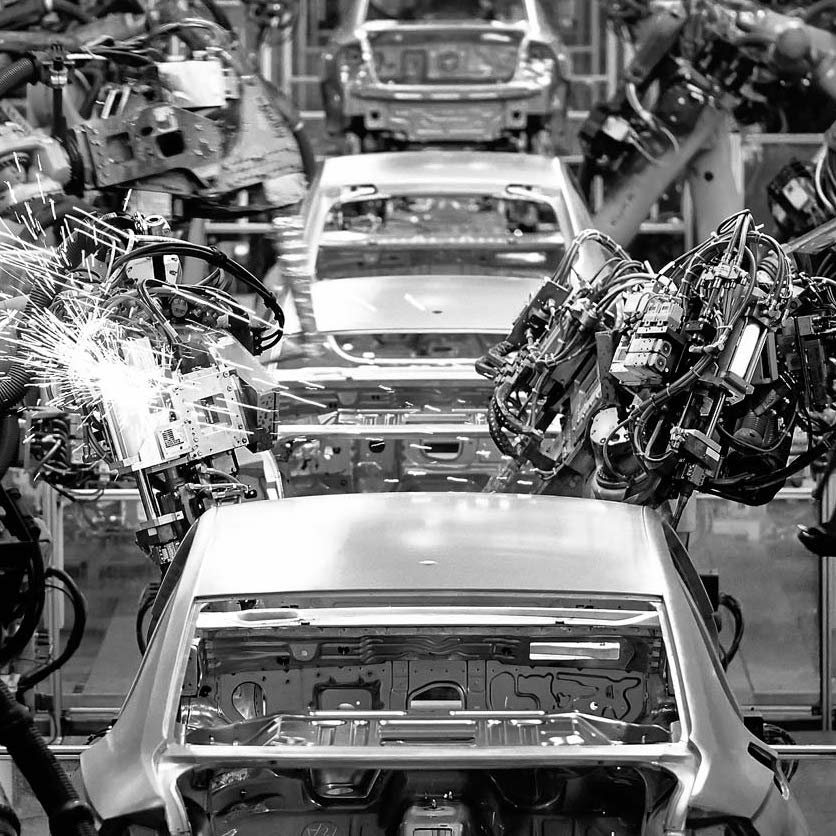Industry
the electrification revolution
We operate in the middle and downstream segments of the battery supply chain. Our core business is to provide innovative clean technology solutions that recover, extract and alchemize the finite lithium battery metals found in end-of-life lithium batteries and to supply Grade-1 renewable battery metals and cathode precursor products back in to the battery supply chain.
Our end-of-life lithium battery recovery solutions and material extraction technologies aim to build local lithium battery recycling capability and capacity to support the sustainable electrification of the transport and power sectors. Our end-of-life lithium battery recycling solution is being designed to limit the transportation of hazardous waste and reduce overall transportation costs, which currently, constitutes over 50% of the end-of-life recycling costs.
We live in extraordinary times of technological advancement and we are currently in the early stages of what is being called the electrification revolution, which is the electrification of the transport industry, the shift away from fossil fuel internal combustion engine vehicles to electric vehicles (EVs). As the cost per kilowatt-hour (kWh) of lithium-ion batteries has declined more than 80 percent over the last decade, these batteries have now become very attractive to new and growing markets such as the EV and stationary battery storage industries. EVs are expected to achieve parity with fossil fuel-powered vehicles across the globe within this decade.
Global demand
EV BATTERY INDUSTRY
Traditional auto manufacturers are investing billions of dollars in order to transition into the EV market and have committed to EV sales targets of at least 40% to 50% of total vehicle sales by 2030.

Global demand for EV batteries is projected to grow from approximately 747 gigawatt hours (GWh) in 2020 to 2,492 gigawatt hours by 2025. In the U.S. EV cell manufacturing is expected to grow to 224 GWh of lithium battery cell manufacturing capability by 2025, (The Whitehouse, 100-day Review Report, 2021).
According to the U.S. Department of Energy, automotive manufacturing in the U.S. provides roughly $1.1 trillion of revenue per year into the U.S. economy. Not including Tesla, who is the benchmark in the auto EV industry, traditional auto manufacturers are investing billions of dollars in order to transition into the EV market and have committed to EV sales targets of at least 40% to 50% of total vehicle sales by 2030.
In order for the U.S. to be competitive, to be self-sufficient in the global EV market and to have sufficient stockpile of critical battery metals for defense technology, the U.S. must build local battery manufacturing capability and battery recycling capacity, including its workforce. The U.S. Department of Energy’s battery supply chain assessment found that currently the U.S. has less than a 10% global market share for manufacturing capacity across all major battery components and cell fabrication. Today, the U.S. relies heavily on importing advanced battery components from abroad, exposing the nation to supply chain vulnerabilities that threaten to disrupt the availability and cost of these technologies, as well as the workforce that manufactures them.
China currently maintains a strong position in the global supply chain for advanced batteries from refining all the way though to downstream battery cell manufacturing. Chinese production of Class 1 raw materials was 80 percent of the total global output in 2020.
BloombergNEF estimates that by the end of 2022, 26 million EV’s will be on the road globally, of which China accounts for 46% of the total global EV sales to date, followed by Europe at 34% and last by North America at 15%.
Closing the loop
LITHIUM BATTERY RECYCLING
Recycling spent lithium batteries prevents hazardous waste from contaminating soil, water and the environment.

Battery recycling prevents hazardous waste from end-of-life lithium batteries from contaminating our soil and water. Currently, estimates suggest that only as much as 5% of all end-of-life lithium batteries are being recycled. BloombergNEF predicts some 5 million metric tons of end-of-life batteries will be available for recycling in 2035, enough material to support 15%-30% of the key metals used for battery manufacturing in that year. Lithium battery electric vehicle (EV) and hybrid electric vehicle (HEV) batteries will reach the end of their initial life in EVs and stationary storage projects after operating for roughly 8-12 years.
According to the World Economic Forum, global transportation and power sectors currently comprise around 40% of global GHG emissions. In the U.S. alone, currently 28% of total U.S. greenhouse gas (GHG) emissions come from the transport sector, making it the largest contributor to U.S. GHG emissions.
As of the end of June 2021, commissioned battery recycling capacity in the U.S. was 7% of global capacity, Australia was only 1%. With China’s very early adoption of EVs and implementation of strategic policies to bolster its local manufacturing and adoption of EVs, 90% of all current and total globally planned recycling capacity is in China (BloombergNEF, Lithium-Ion Battery Recycling Market Outlook, July 2021).
Paris Agreement Committment
EV & STORAGE BATTERIES
Achieving the 1.5°C target would require net-zero global human-caused CO2 emissions by 2050.

Electric Vehicle (EV) and energy storage batteries are critical to realizing the Paris Agreement commitments because EVs and energy storage batteries enable a decentralized, decarbonizing and off-grid energy solution which can help to reduce grid load, provide power to communities without electricity, improve local air quality (by being cleaner than regular internal combustion engine (ICE) vehicles). The electrification of road transport alone is expected to reduce global CO2 emission by 3% p.a. over the decade to 2030.
EVs currently emit 30-60% fewer emissions than combustion engine vehicles depending on the power mix.
The Paris Agreement has set out the ambition to maintain global temperature rise this century to below 2 degrees Celsius (above pre-industrial levels) and to try limit the temperature increase even further to 1.5 degrees Celsius. Achieving the 1.5°C target would require net-zero global human-caused CO2 emissions by 2050.
